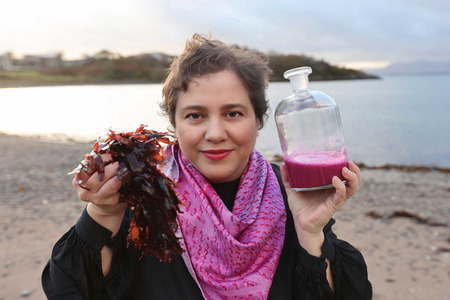
Textile conservationist to display Uzbek to AP ikkat weaving in Mumbai
YarnsandFibers News Bureau 2016-03-28 11:00:00 – MumbaiMadhu Jain known as a textile conservationist and craft revivalist rather than fashion designer to celebrate 29 years of persistent commitment to traditional textiles and handlooms by holding a trade fair in the city Mumbai on April 7.
Her latest collection will a line of her new Uzbek-inspired ikkats, alongside a retrospective of her signature Andhra Pradesh and Odisha Ikkats. She has infused the Buddhist Mandala design from the textile traditions of Thailand into the latter.
India and Uzbekistan, she says, share much in common when it comes to weaving. The socio-cultural-historical relationship between Uzbekistan and India can be traced back to the 11th century. There, the cotton or silk ikkat coats were often created as robes of honour and as formal gifts. They were worn only by the nobility and rich merchants. The colour palette is rich — reds, golden-yellows and incandescent purples.
The word ikkat comes from the Malaysian word 'mengikat', or 'to tie', because the loose threads are tied into bundles using wax-treated cotton to specify where the dye is able to sink in and colour the thread. Ikkat weaving is a mathematical woven wonder, because they are woven with such precision. The weaver has to figure where on the loose threads the dye should (and shouldn't) go, in order for it to form the proper pattern. It's like a logic puzzle, said Jain, whose client list includes Union Cabinet Minister for Women & Child Development Maneka Gandhi and actor Milind Soman.
On the other hand, ikkat from Andhra, produced on pit looms, are used in the preparation of warp and weft. Here, the design sensibility leans towards geometricals. In Odisha, ikkat is inspired by temple motifs and also by nature. So, you will notice parrots, flowers, elephants and deer, Jain said.
Jain’s Nakshi Kantha line, for which she worked closely with the Bangladesh Rural Advancement Committee, one of the world's largest NGOs that works at reviving the gossamer-like Dhaka muslin and the intricate art of Nakshi Kantha in 1996. Katha or kantha is a style of hand embroidery that comes from Bolpur-Shantiniketan in West Bengal.
Several layers of used or worn out materials such as saris, lungis and dhotis are stitched together to make a single kantha. Kantha needlework is a spontaneous folk expression of personal desire and emotion of the rural woman belonging to different regional, ethnic, and religious groups. Thus, no two kantha pieces are alike.
Althought weavers are reluctant to change aeons-old patterns, but today to stay ahead and to save their livelihood they have realized that innovation in design and weave is the key.
Market Intelligence
Ask for free sample Report

experience
Customer Base
dedicated team
Countries Served Worldwide









